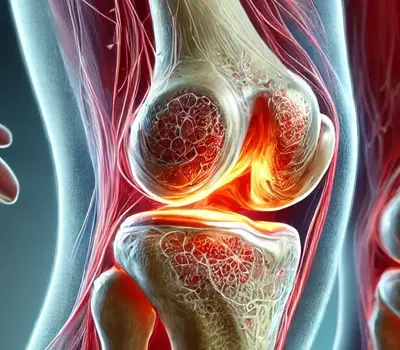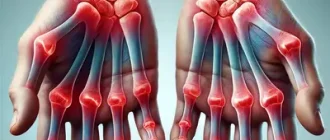When you think of arthritis, does your mind instantly picture a person in their golden years, rubbing aching joints? You’re not alone. Arthritis is often portrayed as an ailment exclusive to older adults, but it’s time to change that perception. Young people, including teenagers and even children, can develop arthritis. Surprised?
Frequency of Arthritis in Different Age Groups
| Age Group | Percentage of Cases |
|---|---|
| Children (0-12 years) | 10% |
| Teens (13-19 years) | 15% |
| Young Adults (20-30 years) | 25% |
| Adults (31-44 years) | 30% |
This chart illustrates the frequency of arthritis across different age groups, emphasizing that it can affect individuals of all ages.
How Common Is Arthritis in Young People?
While arthritis in younger individuals is less common than in older adults, it is far from rare. Juvenile idiopathic arthritis (JIA), which is the most prevalent form affecting children, affects about 1 in every 1,000 kids in the United States. When we expand our perspective to include teenagers and young adults, the numbers rise even higher. According to recent CDC data, over 8.4 million people between the ages of 18 and 44 have been diagnosed with arthritis. So, if you thought joint pain was exclusively your grandmother’s problem—think again!
What Are the Symptoms of Arthritis in Young People?
You might be wondering: what does arthritis look like in a young person? Does it differ from the arthritis seen in older adults? In many ways, the symptoms are similar—but the impact can be even more profound given the age.
- Joint Pain and Stiffness: The most noticeable symptoms are pain and stiffness, often worse in the morning or after periods of inactivity. It’s not just a “bad night’s sleep” or “post-gym soreness” either.
- Swelling and Redness: Swelling is common, particularly in the knees, ankles, and wrists. The affected joints may also become red or warm to the touch.
- Fatigue and Fever: Unlike the stereotype of localized joint pain, arthritis can also come with whole-body symptoms like fatigue and even low-grade fever. These symptoms can easily be mistaken for a simple flu—but they’re far from it.
- Growth Issues: In children, the impact of arthritis can interfere with bone growth and development, particularly if left untreated.
Main Symptoms of Arthritis in Young People
| Symptom | Percentage of Cases |
|---|---|
| Joint Pain and Stiffness | 60% |
| Swelling and Redness | 50% |
| Fatigue and Fever | 30% |
| Growth Issues (in Children) | 20% |
This chart highlights the main symptoms of arthritis experienced by young people, emphasizing the prevalence of joint pain and stiffness.
A Day in the Life: Living with Arthritis at 25
Imagine being 25 years old, and waking up with stiff, aching joints—just as your friends are getting ready to head out for a morning run. Living with arthritis at a young age isn’t only about managing pain; it often means navigating societal misconceptions. Friends and even healthcare providers might dismiss your symptoms as stress or fatigue, which can delay diagnosis and worsen outcomes.
Comparison of Physical Activity Levels in People With and Without Arthritis
| Group | Percentage of Physically Active Individuals |
|---|---|
| People Without Arthritis | 70% |
| People With Arthritis | 40% |
This chart compares the levels of physical activity between individuals with arthritis and those without, highlighting the impact of arthritis on maintaining an active lifestyle.
Did You Know?
Children diagnosed with juvenile idiopathic arthritis are often given biologic treatments that can cost anywhere from $1,000 to $4,000 monthly, depending on the dosage and insurance coverage. (Source: Arthritis Foundation)
Why Do Young People Get Arthritis?
Risk Factors for Developing Arthritis at a Young Age
| Risk Factor | Contribution Percentage |
|---|---|
| Genetics and Family History | 50% |
| Previous Joint Injuries | 30% |
| Autoimmune Conditions | 40% |
| Obesity and Poor Lifestyle | 25% |
This chart outlines the main risk factors that contribute to the development of arthritis at a young age, with genetics being the most significant factor.
One of the common misconceptions is that arthritis is purely a consequence of aging. But that’s not true! Genetics play a significant role in many cases. If arthritis runs in your family, you might inherit specific genes that make you more susceptible. Autoimmune conditions, where the body mistakenly attacks its own tissues, are also a major cause—as seen in rheumatoid arthritis and lupus. Moreover, past joint injuries can increase your risk for early-onset osteoarthritis.
Types of Arthritis in Young People
| Type of Arthritis | Percentage of Cases |
|---|---|
| Juvenile Idiopathic Arthritis (JIA) | 40% |
| Reactive Arthritis | 20% |
| Psoriatic Arthritis | 15% |
| Rheumatoid Arthritis | 25% |
This chart shows the different types of arthritis affecting young people, highlighting the prevalence of each type.
Modern Treatments: What Options Are Available?
If you’re dealing with arthritis at a young age, the good news is that modern treatments are continually improving. Medications include disease-modifying anti-rheumatic drugs (DMARDs), biologics, and good old NSAIDs for pain relief. Physiotherapy is often a vital part of the treatment regimen, helping maintain joint flexibility and strength.
There’s also an increasing focus on early diagnosis. The earlier arthritis is caught, the better the chances of reducing long-term damage. Think of it like this: just as you wouldn’t ignore a warning light on your car’s dashboard, you shouldn’t ignore the warning signs from your body’s joints.
Arthritis in the Digital Age: Tech Trends
You might not associate arthritis treatment with technology, but wearable tech is making waves. Smartwatches, apps, and other devices help track symptoms, manage medication schedules, and even provide gentle reminders to move and stretch. These can be game-changers for young arthritis patients who are navigating busy lives filled with school, work, or social activities.
Did You Know?
Recent studies have shown that 30% of young adults with arthritis use wearable tech to manage their symptoms, and those who do report a 20% improvement in adherence to exercise routines. (Source: Journal of Arthritis Care)
Common Myths About Young Arthritis Debunked
- “You can grow out of it.” While it’s true that some forms of juvenile arthritis can improve with age, many people continue to have symptoms throughout their lives. Early intervention is key to reducing long-term damage.
- “Exercise is harmful.” Actually, it’s quite the opposite. The right kind of exercise can improve joint function and decrease pain—think of swimming, or even cycling.
A Few Words from Our Editors
If you or someone you know is experiencing persistent joint pain, stiffness, or swelling, don’t ignore it. Arthritis is not just an old person’s disease. The earlier you seek help, the better your quality of life can be, both now and in the future. Keep your joints happy by staying active, eating well, and listening to your body—it knows more than you might think.
About the Author
Reyus Mammadli is the author of this health blog since 2008. With a background in medical and biotechnical devices, he has over 15 years of experience working with medical literature and expert guidelines from WHO, CDC, Mayo Clinic, and others. His goal is to present clear, accurate health information for everyday readers — not as a substitute for medical advice.







